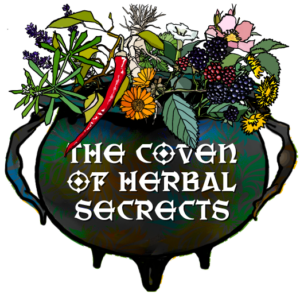
Herbal Spring Vinegars
Preserving fresh green herbs in vinegar is an easy way to capture their nourishing goodness. In Spring, the leaves of plants are packed full of vital nutrients and especially high in minerals. Apple cider vinegar has been used as a health-giving agent for centuries and is an exceptionally good medium for extracting these valuable minerals from the lush green, spring leaves.
 There are many healing powers of vinegar. It helps lower cholesterol, improve skin tone, moderate high blood pressure, prevent or counter osteoporosis and improve metabolic functioning. Herbs and vinegar make a superb combination: the healing and nutritional properties of vinegar married to the aromatic and health-protecting effects of the herbs.
There are many healing powers of vinegar. It helps lower cholesterol, improve skin tone, moderate high blood pressure, prevent or counter osteoporosis and improve metabolic functioning. Herbs and vinegar make a superb combination: the healing and nutritional properties of vinegar married to the aromatic and health-protecting effects of the herbs.
After winter’s lack of light and the more sedentary inclination we feel during cold winter months, we can be depleted of essential vitamins and minerals. As the winter months draw to a close, a spring vinegar can capture the minerals that are abundant in virulent new sprouting spring leaves. Making your vinegar at this time of year marks the start of new endeavours and renewed enthusiasm as spring gets underfoot.
Make your own Spring Herb Vinegar
Ingredients:
- A clean jam jar
- Foraged spring greens
- Organic Apple Cider vinegar
- A label
Method:
Firstly you need to go out and harvest your lush, mineral rich, spring greens; Dandelion (Taraxacum off.) leaves, Cleavers (Galium aparine) and Nettle (Urtica spp.) are a great place to start. Dandelion leaves are a wonderful kidney support as a potassium-rich diuretic. Cleavers also known as “sticky willy” or “goose-grass”, is a celebrated lymphatic cleanser. Nettle tips are a rich source of iron and also have anti-histamine properties, great as preventative before the hayfever season gets underway.
You can add many other greens as long as you are familiar with the plants and confident with identifying them. You might want to add Ramsons, Ground Ivy or Garlic Mustard which all have wonderful aromatic flavour as well as being super nutrient dense.
Next chop the leaves finely and fill a jar that has a plastic lid (metal lids can be corroded by the acidic vinegar).
Cover the leaves with your vinegar and leave for 2 weeks before straining, bottling and labelling (put on the date, and where harvested from as well as what is in it).

Using Your Herb Vinegar:
Try a tablespoon of herb vinegar in a drink of warm water every morning to start the day hydrated with a mineral supplement. You can add molasses to sweeten the drink and give you added iron.
Simply pour your herb vinegar over beans or grains. Add the vinegar to oil and mustard to make a delicious salad dressing or use it straight to season stir-fry and soups.
Regular use boosts the nutrient-level of any diet with very little effort and they offer you an easy way to keep your calcium and mineral levels at an optimum.
Adding vinegar to your food helps to build bones because it makes the minerals from the vegetables you eat more readily available for your body to metabolise. A spoonful of vinegar on your broccoli, kale or dandelion greens increases the calcium you get from these vegetables.
Herbs to add to your vinegar pictured here include: Dandelion, Nettle, Lemon Balm and Rosemary. Cover the herbs in vinegar and leave for 2 weeks Cleavers, Galium aparine are a great addition to your spring vinegar.
Don’t stop reading yet…!
If you want to know the more about Practical Herbalism, why not join our Coven? You’ll soon have access to our best resources while increasing your confidence and knowledge about the magic of herbs and master the art of herbal remedy creation, spells and rites, plus step by step guides to getting to know your plants better.
Practical Herbalism includes Webinars, Videos, Recipes, Articles and Quizzes where you can:
- Learn about Herbs and Conditions
- Explore Sensory Herbalism
- Get down and dirty with Gardening and Growing
- And much MORE!
Plants are calling YOU






